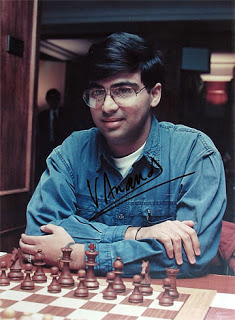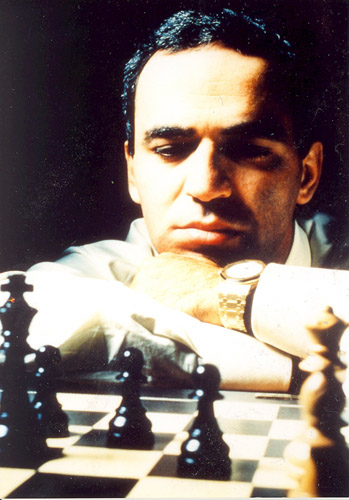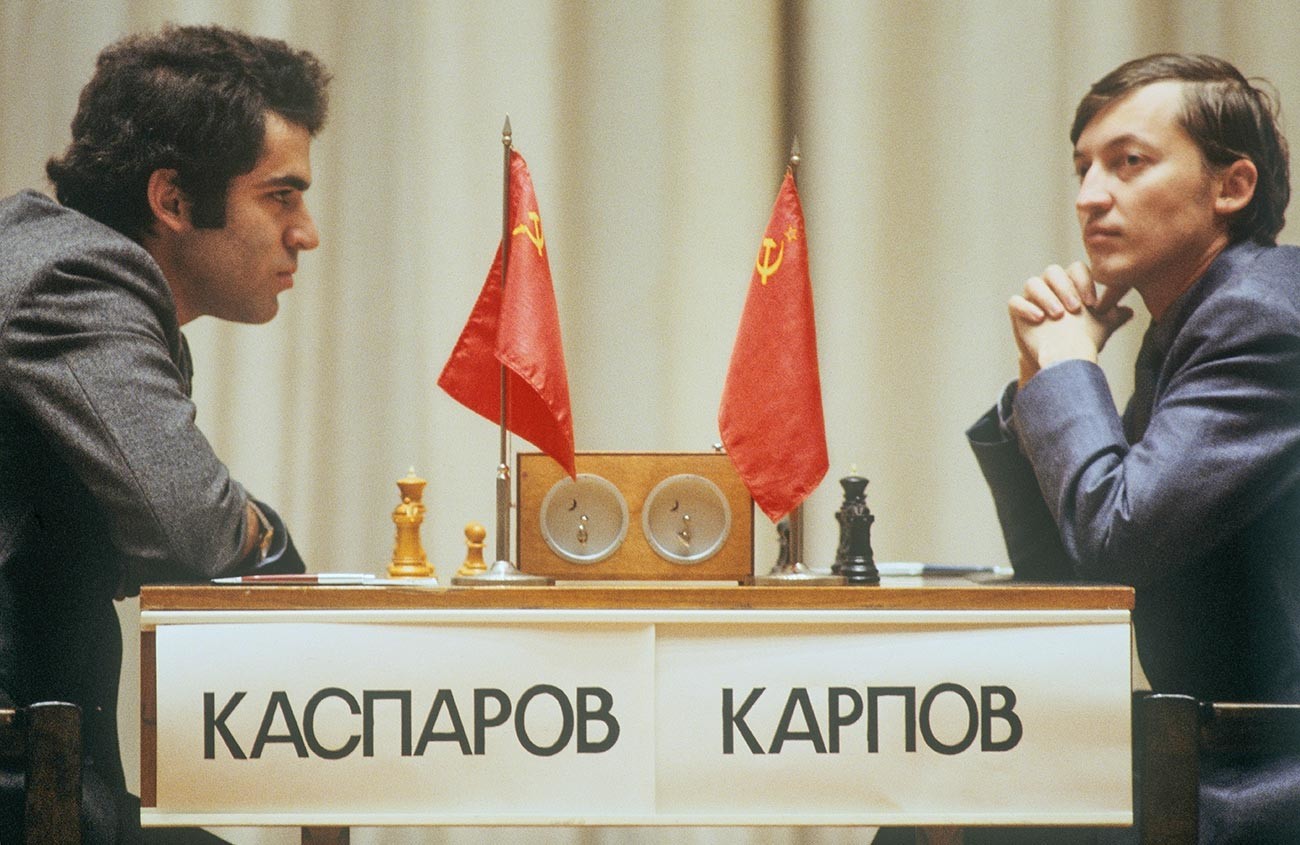.jpeg)

.jpeg)
[Note that Jon Speelman also looks at the content of the article in video format, here embedded at the end of the article.]
With the World Championship just a week away (game 1 in Astana starts next Sunday at 0900 GMT) it is rapidly becoming the only topic in town.
Of course, I’m going to write about it today, but actually I have relatively little to say about the forthcoming battle and instead will mainly approach it from the standpoint of one of the two World Championship matches, I was a second at.
Ian Nepomniachtchi and Ding Liren are both superb players and currently second and third in the world behind the retiring Magnus Carlsen himself. Both have potential weaknesses though.
Nepo’s collapse in the second half of the 2021 match with Carlsen was dramatic. Of course, he will have worked to anneal his armour, but this can only be properly tested in real time in the heat of battle, and he remains potentially brittle.
Ding has started badly in both of the most important tournaments he’s played in: the 2020-1 and 2022 Candidates. Of course, in 2020 he had to spend two weeks in quarantine in Moscow just prior to going to Yekaterinburg, while in 2022 he had to play a vast number of games in a month to fulfil the requirements to qualify for Madrid, but this does perhaps point to a trend.
Head to head, Nepo has the overall advantage in classical chess, but he built this up from 2009-16, and since then Ding has been in the ascendant, though he lost their last decisive game in round 1 in Madrid. The start may prove crucial and I find it hard to separate them in terms of a favourite.

Ian Nepomniachtchi beat Ding Liren with black in the first round of the 2022 Candidates in Madrid | Photo: FIDE / Stev Bonhage
I had the opportunity to observe two World Championship matches at first hand as a second. Both were against Garry Kasparov. In London 1993, Kasparov blew Nigel Short away in the first few games. Nigel rallied brilliantly and actually drew the second half, but the damage was already done, so there wasn’t that much of a chance to observe the full ferocious technical and psychological battle which a World Championship entails.
 Viswanathan Anand v Kasparov at the top of the then Twin Towers in New York in 1995 was a much closer affair, at least for the whole of the first half — and it's this that I'm going to concentrate on. They were playing up to 20 games as compared to the 14 in Astana, which makes quite a difference, but it’s still fascinating to see how the battle and the meta-battle unfolded.
Viswanathan Anand v Kasparov at the top of the then Twin Towers in New York in 1995 was a much closer affair, at least for the whole of the first half — and it's this that I'm going to concentrate on. They were playing up to 20 games as compared to the 14 in Astana, which makes quite a difference, but it’s still fascinating to see how the battle and the meta-battle unfolded.
Anand drew white in game 1 and immediately set out his stall, playing 1.e4, to which Kasparov replied with his customary Najdorf. Vishy chose 6.Be2 and after 6...e6 they had transposed to a Scheveningen in a position which was also contested seven times during the innumerable Karpov v Kasaprov matches. This was the battleground for Vishy’s first five Whites, and in the fifth of them, game 9, Anand won, breaking a run of eight initial draws.
Kasparov, meanwhile, had taken a more circuitous approach with reconnaissance, which also served to broaden the battlefront which we Vishy’s seconds had to defend.
He started in game 2 with Qc2 against the Nimzo-Indian, switched to a line of the Reti/English and only in his third White in game 6 tried 1.e4. This elicited the Open Defence to the Ruy Lopez, a fine system but one against which White can prepare many different and potentially poisonous lines.
After a very fierce battle they drew, and in game 8 Kasparov temporized trying the Scotch, against which Vishy played a nice novelty.
 By the time that they reached game 10, Anand had won game 9, and we should have been fully aware that Kasparov would be enraged and especially dangerous. It was at this moment that Anand made what turned out to be the crucial meta-error.
By the time that they reached game 10, Anand had won game 9, and we should have been fully aware that Kasparov would be enraged and especially dangerous. It was at this moment that Anand made what turned out to be the crucial meta-error.
Of course, he had a back-up defence and a surprise too: the Centre Counter. And this would have been the ideal moment to play it, avoiding whatever poison Garry and his team had concocted. Instead, Vishy persisted with the Open Defence. Naturally, we had analysed game 6 in huge detail, but we’d started a move too late and Kasparov was able to unleash a truly vicious idea. Vishy fought for his life, but it was too much and he succumbed.
Things still looked fine for Anand as white, but in game 11, with brilliant timing, Kasparov shifted to the Dragon: a variation he’d never seriously played before in public. Wrong-footed, Anand played his usual recipe, but Kasparov equalized and then offered a draw. With lashings of hindsight, Anand should perhaps have accepted to restore his equilibrium. It would have been an opening victory for Kasparov and Anand would then have had to defend a black, but the battle would have continued. Instead Anand declined, and then, in a still equal position, went off the rails and lost.
Anand now switched to a different line of the Lopez and drew.
A second Dragon followed in which, still not yet ready to play the absolute main lines, Anand tried a little known side line. But this backfired. He was soon worse and got blown away in just 22 moves!
It was only in game 14 that Vishy finally did try the Centre Counter, but of course by then the momentum had shifted fatally. He got an excellent position and had this been game 10 might very well have won, but Kasparov recovered to win this too. With Kasaprov three up with six to play, it was effectively over, and they drew the final four games to end up with Kasparov 10½-7½ as the winner, and the last two games unnecessary.
I’ve gone into this detail to try to explain how a match creates its own space. There will be a number of opening battlefronts, and also in a more general sense each player will have a meta-strategy as to the types of position they want to reach (do they want quiet positions, or more complex ones against this opponent). There is also of course a raging psychological component.
As a team, we were perhaps still quite green in 1995, but Kasparov had been battle-hardened by Anatoly Karpov beyond measure and had a superb feeling for the pulse of the match: when to probe, when to hold, when to strike. In the end, this overwhelmed Vishy.
I’ve got the games of the match in my database with various annotators, some of them working in German. I decided to take just the first three decisive games : Anand's win and Kasparov's first two. I’ve left the notes to them more or less intact, with just the odd comment marked JS and a few more diagrams. It’s the story I’m interested in more than the exact details, and those three games were the fulcrum of the pendulum’s swung in Kasparov’s favour.

Garry Kasparov was battle-hardened during his gruelling matches against Anatoly Karpov
Select an entry from the list to switch between games
| Advertising |